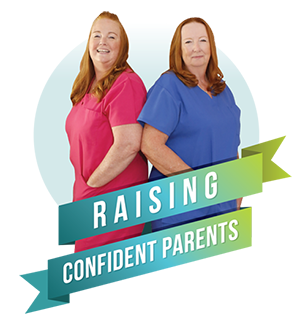You’re in the home stretch! Some of the same discomforts you had in your second trimester will continue. Plus, many women find breathing difficult and notice they have to go to the bathroom even more often. This is because the baby is getting bigger and is putting more pressure on your organs. Don’t worry, your baby is fine, and these problems will lessen once you give birth.
Some new changes to your body that you may notice in the third trimester include:
- Shortness of breath
- Heartburn
- Hemorrhoids
- Tender breasts, which may leak a watery pre-milk called colostrum
- Belly button sticks out
- Insomnia
- The baby “dropping” or moving lower in your abdomen
- Contractions, which can be a sign of real or false labor
Sleep Problems
Sleep problems are common during pregnancy. Studies tell us that hormonal changes, plus the discomfort of later pregnancy, can break up your sleep cycle. According to the National Sleep Foundation, about 78 percent of women have insomnia or other sleep problems during pregnancy. Just as you will need to make sleep a priority for your newborn,
You can apply some general rules to help you sleep better:
- Create a consistent bedtime routine.
- For ideal sleeping conditions, your room should be cool, dark, and quiet. Keep the temperature in your bedroom between 68 and 72 degrees.
- Remove any electronics from your bedroom, and avoid screen time at least an hour before bed. Blue light from your TV, mobile phone, or tablet can disrupt your body’s circadian rhythm. To make it easier to look at your phone in dim light, you can reduce your screen’s blue color. Your screen will look red or amber, which can help your eyes adjust to night vision more easily.
- Change your mobile phone from blue light to amber light.
- If you wake up at night, do not check your phone or computer. The blue light is too stimulating. It’s better to take some deep breaths and read a book.
- Use a night light in the bathroom for those midnight visits. A dim light will be less jarring than a bright overhead light.
- Use large pillows between your knees, as well as under your belly as it grows.
- Use white noise to drown out outside noises.
- Don’t eat too close to bedtime. Try to eat small meals and foods that are easier to digest, such as smoothies and fruits with unprocessed fats.
- Sleep experts all suggest using your bedroom only for sleep and sex.
- Keep a journal next to the bed. If you cannot stop thinking about something, write it down and then figure it out in the morning.
- Incorporate relaxation techniques. Do some deep breathing, stretching, yoga, and meditation. When you are well-rested, you will be more physically and mentally prepared for labor.
Parent tip: “The Calm app is a favorite of mine. It allows you easy access to breathing exercises, meditations, and sleep stories. It helps me manage my stress and anxiety.”
Preeclampsia
Preeclampsia sometimes develops without any symptoms. High blood pressure may develop slowly, or it may have a sudden onset. Monitoring your blood pressure is an important part of prenatal care because the first sign of preeclampsia is commonly a rise in blood pressure. Blood pressure that exceeds 140/90 millimeters of mercury (mm Hg) or greater—documented on two occasions, at least four hours apart—is abnormal.
Other signs and symptoms of preeclampsia may include:
- Excess protein in your urine (proteinuria) or additional signs of kidney problems.
- Severe headaches.
- Changes in vision, including temporary loss of vision, blurred vision or light sensitivity.
- Upper abdominal pain, usually under your ribs on the right side.
- Nausea or vomiting.
- Decreased urine output.
- Decreased levels of platelets in your blood (thrombocytopenia).
- Impaired liver function.
- Shortness of breath, caused by fluid in your lungs.
- Sudden weight gain and swelling (edema)—particularly in your face and hands—may occur with preeclampsia. But these also occur in many normal pregnancies, so they’re not considered reliable signs of preeclampsia.
Vaginal bleeding
It’s important to report any vaginal bleeding during pregnancy to your health-care provider. Be prepared to describe how much blood you passed, what it looked like, and whether it included any clots or tissue.
When to see a doctor
Make sure you attend your prenatal visits so that your care provider can monitor your blood pressure. Contact your doctor immediately or go to an emergency room if you have severe headaches, blurred vision or other visual disturbance, severe pain in your abdomen, or severe shortness of breath. Because headaches, nausea, and aches and pains are common pregnancy complaints, it’s difficult to know when new symptoms are simply part of being pregnant and when they may indicate a serious problem — especially if it’s your first pregnancy. If you’re concerned about your symptoms, contact your doctor.
Mayo Clinic Staff and Hypertension in pregnancy. Washington, D.C.: American College of Obstetricians and Gynecologists. 2013. www.acog.org/Resources_And_Publications/Task_Force_and_Work_Group_Reports/Hypertension_in_Pregnancy.
(accessed Dec. 23, 2016).
Stay healthy Mama, you got this!
Raising Confident Parents offers many FREE secrets from Baby Nurses and Veteran Parents each providing you with the opportunity to learn more about your baby and build your confidence when you come home from the hospital.


